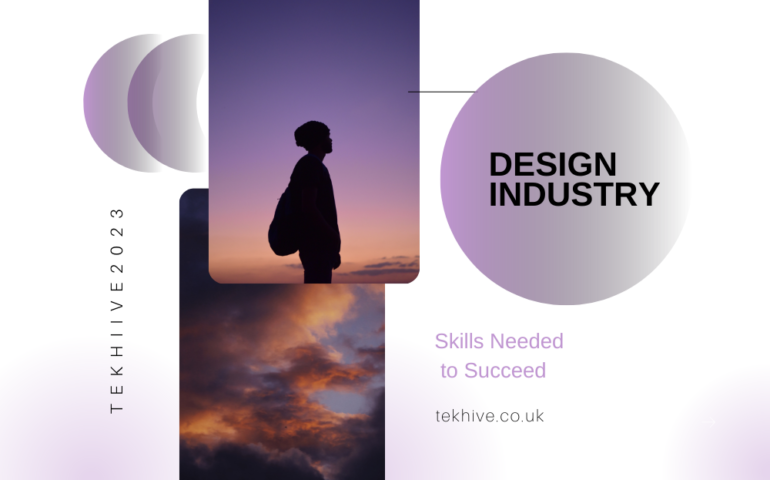Top Skills Needed to Succeed in the Design Industry
Having an understanding of the Design Industry process is an essential skill for any web & graphic designer, video producers and content creators. This includes understanding offset and digital creation processes, styles, branding, typography formats and different theme types. It is also important to know how to use the correct colour systems such as Pantone Matching System. Knowing these techniques is essential as minor details impacts hugely when it comes to design.
Interpersonal skills for Design Industry
Interpersonal skills are one of the vitals in succeeding in the Design Industry as most projects are completed with collaboration in mind. Learning how to sync up concepts with your designers, editors and clients are the quintessential aspect of finding the right recipe with any design projects.
There are many ways to develop interpersonal skills. The best way is to practice them daily. They can’t be learned from a book, but can be honed by observation and constant interaction. Here are some ways to improve your interpersonal skills: a) Practice listening to others with purpose; avoid interrupting others; and b) Be dependable, positive, and able to rely on yourself when needed. Employers appreciate reliable workers.
You can practice these skills by participating in offline seminars and attending online workshops. You can also try to join groups or clubs if you don’t have many opportunities to interact with others. Also, review your interactions with others and think of ways you could improve. Once you’ve mastered these skills, you’ll be able to interact with others in a more effective way.
Effective communication skills are essential for success in the design industry but also in any career. In fact, good communication skills are one of the most important criteria for successful careers. Without them, it can be difficult to get along with people especially in the design world as it is usually a very assertive world where beauty is king. Even the most introverted individuals need good communication skills to be successful.
Being patient is another crucial skill. People who possess excellent patience can build rapport and solve problems without escalation. They also have an outstanding ability to listen to others and understand their needs.
Problem-solving skills for Design Industry
One of the most important skills for design professionals is problem-solving. Good problem-solvers have the ability to identify the root of a problem, deconstruct it, and then develop an effective set of actions to resolve it. Problem-solving is an essential skill that can be honed by experience.
Good problem-solving skills are essential for any job. Employers seek employees who can analyse problems and apply solutions quickly. They must also be reliable and have technical skills. You can gain more technical skills through coursework and training. However, these skills are not the only things that employers look for in a candidate. Having good communication skills is also a big plus. In order to stand out in a competitive field, it is important to have strong problem-solving skills.
As a designer, you need to know how to communicate effectively with other people. You need to know how to build a team that works well together. You should also know how to negotiate. It is important to know how to follow through on your plan. Sometimes, you might need to alter your plan in order to make it work.
A solid problem-solving process begins with breaking down a problem. It involves thinking of alternatives to a problem, implementing them, and then monitoring their execution. Ideally, the solution should result in an improved project or a better customer service experience.
In a survey of over 13,500 designers, it was found that problem-solving skills are among the top skills that are crucial for success in the design industry. An understanding of human behaviour and a willingness to listen to feedback are other important skills that designers need to succeed in the design industry.
Adobe software
One of the most important skills needed to be successful in the design industry is the ability to use Adobe software. This industry-leading package of software is used by creatives in almost every industry, from web designers to animators to video editors. It is recommended that you learn at least one Adobe program in order to acquire technical literacy and be more prepared for the future. Having a grasp of Adobe software will give you the edge you need to land your dream creative job.
Adobe products include Photoshop, Acrobat, and InDesign. You should also have some knowledge of JavaScript, which is the most widely used programming language for the web. These programs help add animation, interactivity, and automation to websites.
Color theory
Color theory is an important part of the design process. The right color can affect a user’s reaction to a product or service. It can also influence their purchasing decisions. Using color theory in design can help you optimize the psychological impact of colors and increase conversion rates. For example, blue is an excellent color for corporate branding, as it represents reliability and trust. It also conveys a sense of freshness when highly saturated.
Understanding color theory is a fundamental skill for any designer. Whether you’re a web developer, an interactive game developer, or a print designer, understanding color theory can help you create smarter, more successful designs. There’s a lot of research pointing to the powerful effects of color on humans. In addition to the impact of colors on visual design, research shows that using colors effectively can boost a product’s brand recognition by 80 percent. In addition, color helps guide a user through a website, improving the overall experience.
While it may seem easy to choose colors that work well together, it’s important to remember that clashing colors can make a design look drab or boring. Instead, use colors that work well together, including complementary ones. This way, each item stands out while still maintaining a sense of legibility. A good understanding of color theory will save you a lot of trial and error.
In addition to knowledge of color theory, understanding color theory is an important part of painting. Creating a beautiful painting involves learning about the properties of colors and the way they interact with each other. Painting is an art form that requires practice, skill, and play.
Contact Us
If you want to read more information about how to boost your website traffic, just visit –> https://www.tekhive.co.uk
Related News









